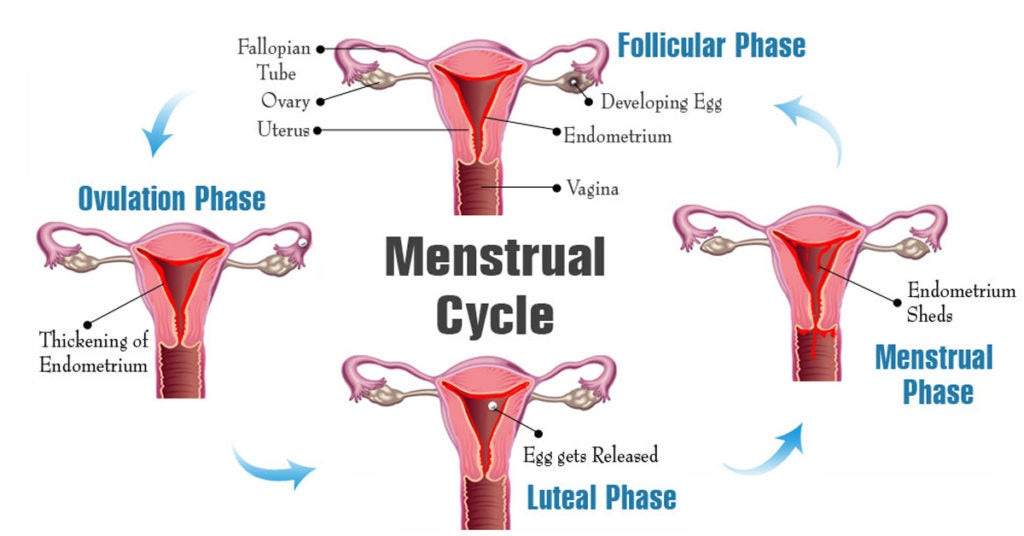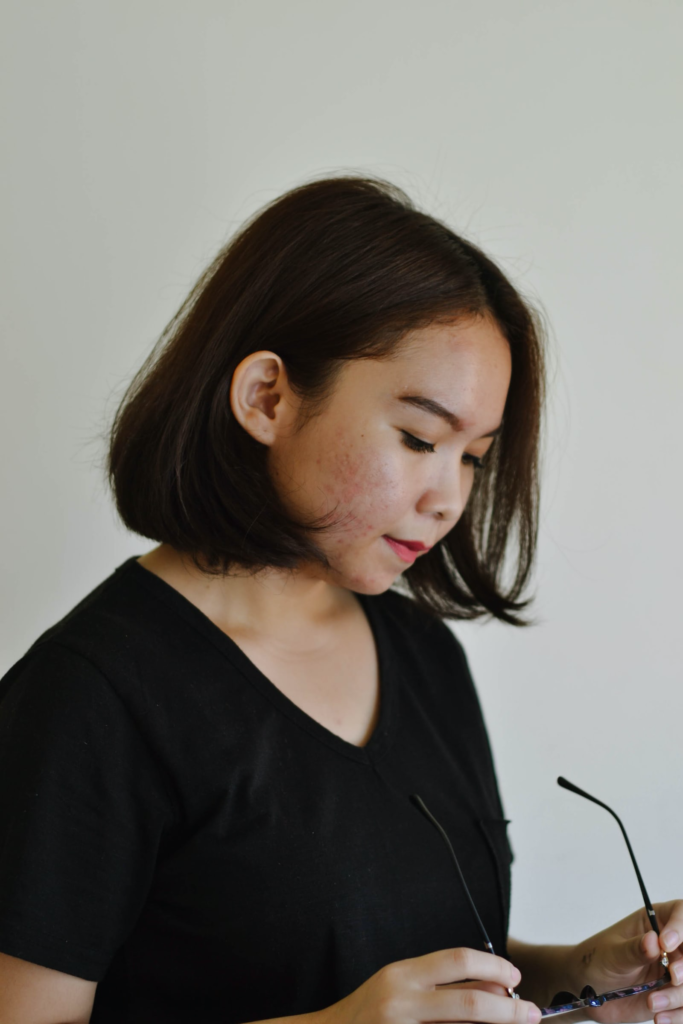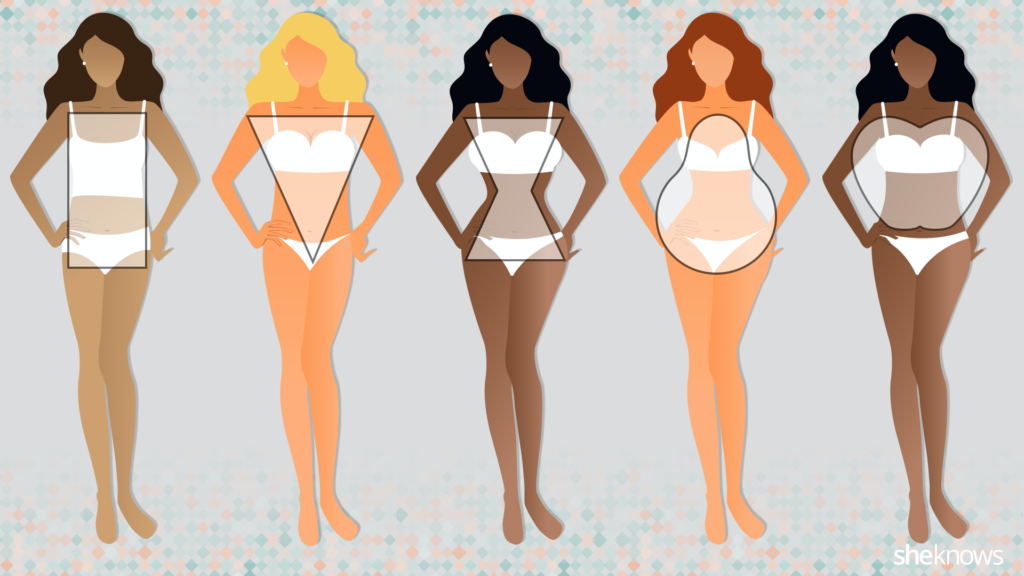Puberty is the stage of human development during which adolescents develop into sexually mature adults. During puberty, the body grows faster than it has since the first year of life. Hormones that create changes in the reproductive system are released which causes the body to grow into its adult form. Puberty can sometimes be confusing, uncomfortable, or embarrassing- it is a normal and necessary process! Every female will experience the changes, embarrassments, and confusion that can be associated with puberty—it is a normal and necessary process! Girls experience the changes at different times and in different ways, but eventually everyone develops the bodily characteristics of an adult female. While these changes are similar for many people, variation is normal, and no two people are exactly alike. There is no right or wrong way to develop; that is the beauty of the human body!
Table of Contents
When Do Women Reach Puberty?
Girls generally start puberty between ages 8 and 13, or when the body reaches a certain weight.₁ Some girls begin puberty earlier (“early bloomers”) or later (“late bloomers”), and that is perfectly okay! When the body is ready to begin puberty, the hypothalamus in the brain will release a hormone, gonadotropin, into the bloodstream, which then stimulates activity in the gonads and produces changes in ovaries. The ovaries then begin to produce estrogen, a hormone which helps prepare the body for reproduction by causing sexual maturation, leading to the physical changes associated with puberty. For females, the aspects of puberty can be broken down into categories, including breast development, menstruation, acne breakouts, growth of new body hair, changes to the vulva and vagina, and vocal and mental maturation.
Breast Development
Breasts develop at different rates for every female. There is no way to speed up or slow down breast growth.2 Breast size does not determine beauty, sexuality, or identity.
Stages of Breast Development

In preadolescence, before the onset of puberty, the breasts are flat and only the tips of the nipples are raised. This is referred to as stage 1 of breast development. Around the ages of 9 or 10, although sometimes much earlier or later, fat tissue forms and the areolas darken, forming breast buds. These nickel-sized lumps under one or both nipples are considered stage 2 breasts, and are often the first visible signs of puberty in females. In stage 3, breasts grow larger, the areola continues to darken, and glandular breast tissue is present. The glandular tissue is in the upper, outer part of the breast and usually feels more bumpy or lumpy than the surrounding lower fat tissue. In stage 3, breasts begin in a conical shape and start to round out as time progresses. Stage 4 is marked by the raising of the nipple and areola above the breast. This stage is sometimes skipped completely. By stage 5, the body has formed mature adult breasts, with a full round shape and only raised nipples.3,4

One breast may develop faster than the other, but they tend to become more even with time. However, it is common for one of a female’s breasts to be larger or smaller than the other. More often than not, adult women have two different sized breasts and can almost always indicate which breast is bigger or smaller. In this way, it is perfectly normal and healthy to have breasts of different sizes and should not be viewed as negative or scary. To learn more, check out our article on learning to love your breasts!
Menstruation
Approximately 1.5 to 2 years after the onset of breast development, girls may experience their very first menstruation, referred to as “menarche.” The menstrual cycle is controlled by hormones like estrogen and progestin with the purpose of preparing the body for pregnancy.2
How Menstruation Works

The female body has two ovaries, each one containing immature eggs. During the menstrual cycle, one of the eggs in the ovaries matures to prepare for fertilization by a sperm. About two weeks into the menstrual cycle, the ovaries release an egg in a process known as ovulation. Some females may experience mild symptoms during ovulation, including bloating, spotting of blood, or mild pain in the lower belly region. Most females experience no symptoms at all. Once the egg is released, it travels through the fallopian tubes to the uterus, where the egg may or may not be fertilized by a sperm cell.

When the egg is not fertilized, which happens every menstrual cycle unless the woman becomes pregnant, the egg will not implant into the uterus and the built up endometrial tissue and blood will shed. This flow of blood and tissue is the “period” or menstruation portion of the cycle. A period usually lasts five to seven days with the first three to four days having a heavier flow than the last few days. To learn the menstrual cycle, please visit our article on females’ first period.
If fertilization occurs and a female does become pregnant, her period will return after pregnancy. To learn more about pregnancy and how one becomes pregnant, explore our article on the biological steps to becoming pregnant.
Pads and Tampons

The most commonly used methods of absorbing menstrual blood are sanitary pads or tampons. Pads, or sanitary napkins, are made of a diaper-like material and sit on the inside of underwear. One side of a pad is sticky to attach to the underwear, and the other side is the soft, absorbent material. Tampons are small, rod-shaped material that are inserted inside the vagina to absorb blood before it leaves the body. Tampons can either be inserted with the fingers or with an applicator.5 It is important to handle the insertion and removal of pads and tampons with thoroughly washed hands. Many girls choose to start off with pads and transition to tampons. Both pads and tampons come in many different sizes and brands. We recommended avoiding scented pads and tampons as they may cause irritation or infection. To get a more detailed description of pads and tampons, or to learn about the other methods of dealing with period blood, read our article on menstrual products.
Acne

Puberty and the teenage years can be a stressful time, and with the increase in hormones and major changes to the body, some breakouts are inevitable. Increased activity of the oil-secreting glands in the skin causes the emergence of pimples, but acne usually declines or disappears completely at the end of puberty. Along with the changes to one’s body during puberty, there will likely be an increase in acne breakouts on your face, back or chest area. If acne becomes or remains a particularly difficult issue, most pharmacies sell acne cleansers that may help.2 Washing one’s face twice a day can help keep the excess oils from building up on the skin. It is recommended to avoid picking or popping pimples. This spreads bacteria and increases breakouts, and may even cause scarring. If acne persists or begins to cause anxiety ,even with the use of over-the-counter cleansers, we recommend visiting a dermatologist. Doctors are able to prescribe cleansers and/or creams which may be more effective for an individual’s specific skin type.
Body Hair
During puberty, hair grows in new places on the body. Even before a female’s first period, there will likely be hair beginning to grow in the pubic area, under the armpits, and thickening and darkening of hair on the legs. Pubic hair grows on the skin above the pubic bone (shown in the photo above), on a female’s vulva, and sometimes reaching to her inner thighs. The hormone testosterone has been linked to the growth of different types of body hair for both males and females. However, females produce much less testosterone than men and thus have less hair on the chest and face.2

Women may start to notice stray hairs around their areola (the darker-toned circle of skin around the nipple).2 All of this hair is completely normal and natural. Some women choose to remove their body hair, usually by shaving, waxing or plucking. Each woman can choose to do whatever she wishes with her body. This hair is not dangerous or unsanitary in any way and does not need to be removed. Many women decide against removing this hair and retain a more natural look. However, to learn more about methods of hair removal, specifically pubic hair removal, feel free to explore our article discussing modification of pubic hair. Overall, keeping or removing body hair is a woman’s decision.
Body Shape
Girls’ figures develop into more womanly bodies throughout puberty as they gain weight in areas such as their hips and breasts. Girls also have growth spurts in height throughout puberty. This extra weight and increase in height is an important part of becoming an adult female. There are many theories as to why this happens, but the most commonly accepted idea is that wider hips attract more mating partners. Wider hips are also useful during childbirth for both the mother and baby because they allow for a wider birth canal. Overall, girls tend to fill out all over the body and develop more curvature as they grow older.2 While developing into one’s adult body, it is always important to focus on maintaining a positive body image. These curves should be embraced and understood as natural and normal occurrences in female puberty.

Vulva
The female reproductive system changes drastically during puberty. The vulva, pictured below, a term that refers to all the external features of the female genitalia, including the labia, clitoris, and mons pubis. The vulva undergoes an incredible transformation. Pubic hair appears and the structures of the vulva become darker, larger and more pronounced. The pigmentation starts at the labia majora, spreads to the mons pubis, and may extend to the thighs. To see a detailed illustration and description of the various parts of the vulva, please visit our page on female anatomy. The vulva is a primary source of sexual pleasure for females, and it is important that all females be familiar with this part of their anatomy.

There is a huge amount of variation among females in the color, size, and shape of their vulvas, just like any other body part. These variations are natural and do not have a direct effect on reproductive function or sexual pleasure. Women can explore their vulva by standing or sitting in front of a mirror with their legs spread apart or holding a mirror between their legs while propping one leg up. Many females find, while exploring, that their vulvas do not really look like the ones shown on this web site, in magazines, or elsewhere. This is nothing to worry about! Each person’s body is different, and as we have mentioned, difference is the key to human beauty.
Always handle the vulva with clean and gentle hands. To keep the vulva healthy, females should eat healthily, exercise on a regular basis, wash the skin regularly with gentle soap and water, and wipe from front to back after going to the bathroom. Wiping back to front may accidentally infect the vagina with bacteria from the anus.2
Vagina
Some common concerns about the vagina and vulva are the discharges and smells that are sometimes associated with it. With the onset of puberty, the vagina begins producing a discharge (called leukorrhea) that acts primarily as a defense against germs. Between individuals, discharge varies slightly in texture and in color but usually has a smooth, slightly sticky texture and is clear, white, or off-white in color. In this way, the vagina is self-cleaning because it ensures that no bacteria or other harmful substances enter it. This discharge is the byproduct of vaginal cleaning. We do not recommend douching, as doing so causes more harm than good.

A different type of discharge is produced in the vagina when a woman becomes sexually aroused. This discharge is clear and slippery and serves as a natural lubricant. Every woman’s vulva has a unique smell that may be sexually arousing to her and her partner. Fishy, yeasty, or other foul smells emerging from the vulva may indicate the presence of an infection and should be checked out by a healthcare professional.2
Vocal Deepening
The least noticeable change in female puberty is probably the changing of a girl’s voice. Women’s vocal chords do not deepen nearly as much as men’s do, but they do in fact deepen. The slight change allows for a woman’s tone to develop a more adult, lower-pitched sound. Unlike men, women experience this change gradually throughout their lives and not solely during puberty. Women who sing have been known to lose the ability to hit certain high notes they could sing before their voices matured. Overall, however, the change in a woman’s voice is relatively slight.2
Mental Maturation
Aside from the physical changes mentioned above, the hormonal developments associated with puberty can cause a shift in emotions as well. These changes may lead young women to experience new thoughts and feelings about sex, ranging from confusion to arousal, which may have never been felt before. Women may feel funny about asking parents or teachers questions pertaining to puberty or sexuality, but asking questions is one of the best ways to learn about the changes the female body and mind undergo in puberty. For some suggestions on how to go about asking questions, please read this article on talking to your parents about sex. For women who are not completely comfortable speaking with their parents or a teachers can consider talking to a doctor, school nurse or counselor, older siblings, or ask us using our “Ask the Sexperts” submission page.
References
- Babycenter. “Precocious (Early) Puberty in Girls.” Babycenter, BabyCenter, L.L.C., June 2016.
- Peri, Camille and Nazario, Brunilda. WebMD.com. “What Girls Need To Know About Growing Up.” 2016.
- Encyclopedia of Children’s Health . “Breast Development .” Health of Children , Advameg, Inc., 2005.
- Planned Parenthood. “Menstruation.” Planned Parenthood Federation of America Inc, 2018.
- “Pads and Tampons.” Edited by Mary L. Gavin, KidsHealth, The Nemours Foundation, Jan. 2014.
Last Updated: 27 February 2018.
